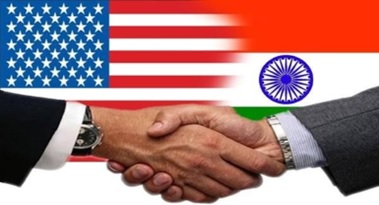Bolstering India-U.S. Relations: Opportunities, Reforms, and Collaborative Pathways
Context:
Growing importance of the relationship between India and the United States, highlighting their mutual interests and the potential benefits of their partnership. It emphasizes the need for further collaboration between the two countries and suggests specific areas where India could benefit from U.S. assistance.
Relevance:
– General Studies Paper 2: International Relations
– General Studies Paper 3: Indian Economy: India’s economic growth, infrastructure development, fiscal management.
Mains Questions:
Discuss the success of recent infrastructure initiatives and their potential impact on the country’s progress. How can collaborations with foreign partners, contribute to India’s infrastructure expansion and modernization? (Word limit: 250 words)
Prelims:
- India’s population projections and its impact on various sectors.
- India’s trade deficit and its implications.
- Digitalization initiatives.
- Environmental Tax
Dimensions of the Article:
-
India-U.S. Strategic Partnership
-
India’s Economic Growth and Infrastructure Development
-
Reforms and Initiatives
-
India’s Challenges and Potential Areas for Collaboration
-
Importance of India-U.S. Collaboration
I. India-U.S. Strategic Partnership:
- The article emphasizes the growing importance of the strategic partnership between India and the United States.
- According to PricewaterhouseCoopers, it is estimated that India will reach $25 trillion GDP by 2047, 100 years after Independence.
- It highlights their mutual interests and the benefits derived from their collaboration which states the personal outreach of the Indian Prime Minister and the effective articulation of India’s position by the External Affairs Minister on the global stage.
II. India’s Economic Growth and Infrastructure Development:
- India’s remarkable economic growth, highlighting the timeline of reaching different GDP milestones.
- India took 63 years to reach $1 trillion GDP, seven years to hit $2 trillion, and three years to hit $3 trillion.
- It also mentions the increasing mobile data consumption, internet coverage, and the positive impact on prosperity across the country. Furthermore, it acknowledges the success of infrastructure development and the role of fiscal prudence in supporting these long-gestation projects.
III. Reforms and Initiatives:
- The positive outcomes of listing projects on PRAGATI, which expedites government orders and clearances, leading to streamlined infrastructure development.
- The role of Geospatial Information Systems in preventing unnecessary road and forest destruction is also mentioned.
- Additionally, it discusses the reforms in commercial coal mining, oil exploration contracts, and the Public Financial Management System, which enhance transparency, accountability, and efficiency in government financial spending.
IV. India’s Challenges and Potential Areas for Collaboration:
- The need for digitalization.
- Agricultural reforms.
- Supply chain capability building.
- Manufacturing growth, and
- Judicial reforms.
- The collaboration with the United States, leveraging their capital and technology, can be beneficial in addressing these challenges and achieving modernization in defense technology.
V. Importance of India-U.S. Collaboration:
- It helps India to move beyond non-alignment principles to measure each situation based on merit and national interest.
- It acknowledges the positive perception of India by both Republicans and Democrats and encourages further steps towards becoming allies.
- An easy win in the form of facilitating visa formalities in Indian cities, which would enhance travel convenience for citizens.
Conclusion:
The article reiterates the importance of India-U.S. collaboration and the potential benefits it can bring to both countries. It emphasizes the need for India to leverage U.S. assistance in various sectors to achieve its developmental goals. By expanding diplomatic efforts and enhancing bilateral cooperation, India can strengthen its global standing and foster a closer relationship with the United State





